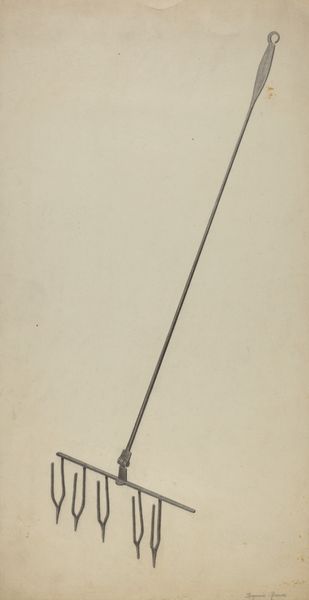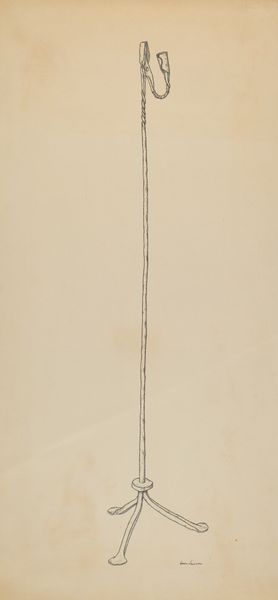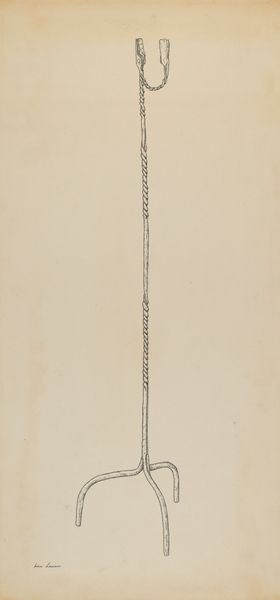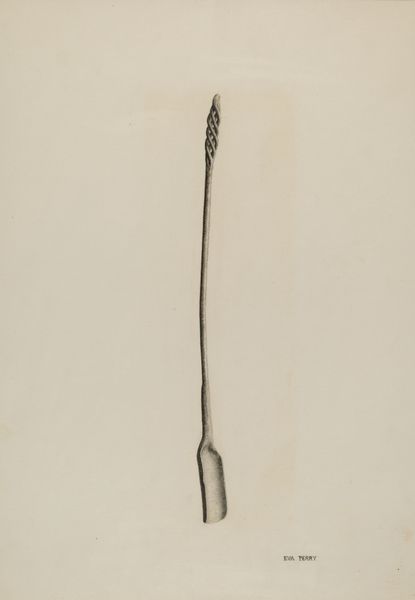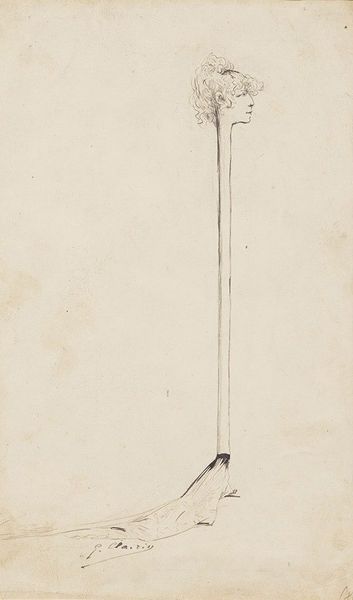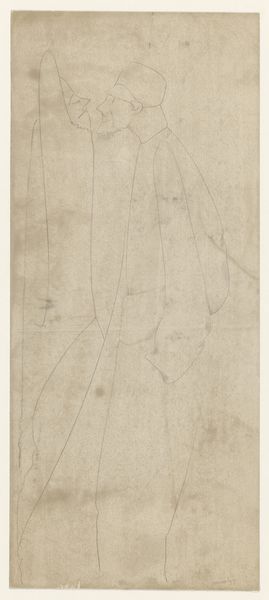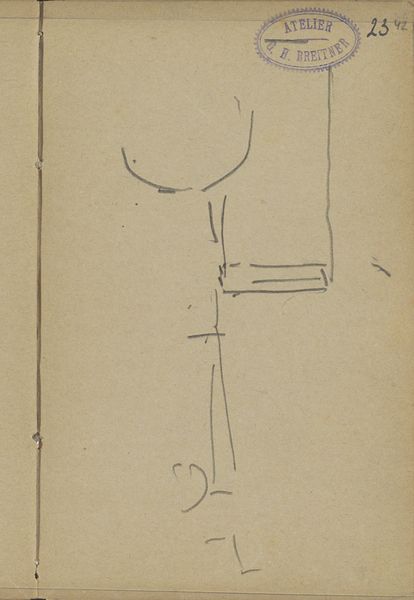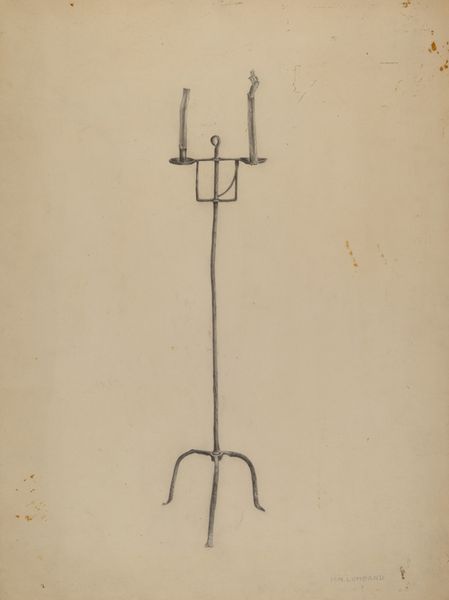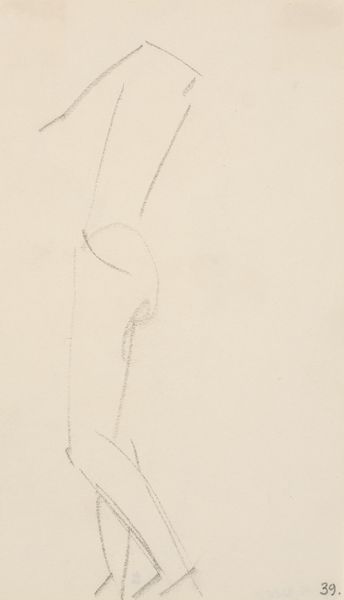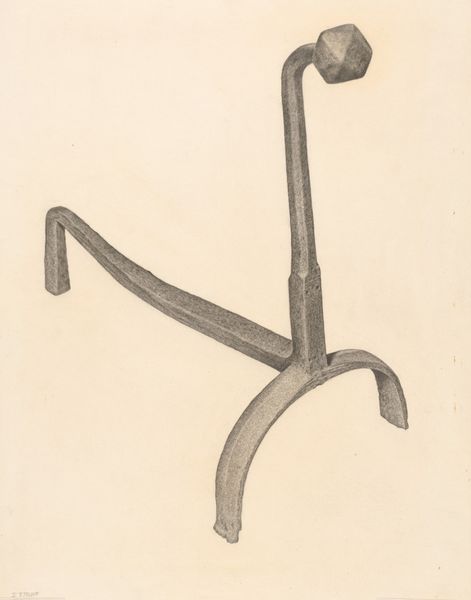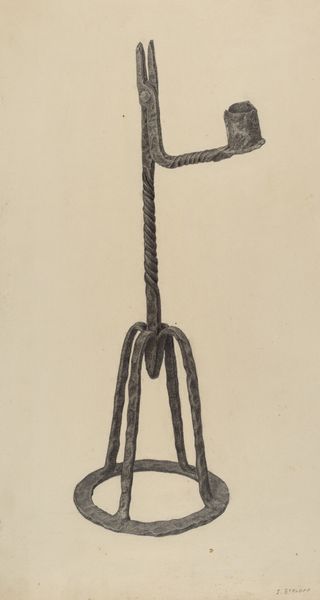
drawing, pencil
#
drawing
#
pencil
#
modernism
#
realism
Dimensions: overall: 51.8 x 30.8 cm (20 3/8 x 12 1/8 in.)
Copyright: National Gallery of Art: CC0 1.0
Curator: Here we have Benjamin Resnick's pencil drawing, "Rush and Candle Stand," created around 1938. The depiction leans towards both modernism and realism in style. What springs to mind when you first look at this, our resident artist? Editor: Stark elegance, I suppose. It’s so stripped down, almost painfully functional, like something born out of necessity, yet still possessing a strange beauty in its very austerity. A lonely kind of beauty. Curator: You've captured it well. In the context of its time, remember the socio-economic landscape of the late 1930s. Many artists, supported by public work programs, focused on representing everyday objects with a renewed appreciation for utility. Editor: It feels like a humble ode to survival, right? Not glorifying some grand historical event but celebrating the quiet persistence of ordinary lives and ordinary things during trying times. Makes you wonder what stories it could tell about lighting up the dark during the Depression. Curator: Exactly! The candlestick itself takes on a symbolic weight beyond its simple function, a beacon against the shadows, literal and figurative. Its composition, isolated on the page, gives it an almost monumental presence. Editor: I see what you mean. Though spare, it does demand your attention, this almost skeletal form against the void. A lot is said with so little here. There is some wonderful restraint that somehow amplifies its emotional pull. What does the absence imply? Curator: That's an interesting angle. It subtly asks what isn't being depicted? What are we being invited to fill in ourselves about this object, about the life it serves? It brings the role of the viewer, us, into the history being recorded. Editor: Okay, I’m walking away thinking more about the things that don’t make it into the textbooks. The power, in the everyday, the unpretentious objects that testify to a certain enduring hope, you know? Curator: And I'm left contemplating how public art, even a simple drawing, can preserve and elevate the overlooked aspects of our collective memory.
Comments
No comments
Be the first to comment and join the conversation on the ultimate creative platform.
